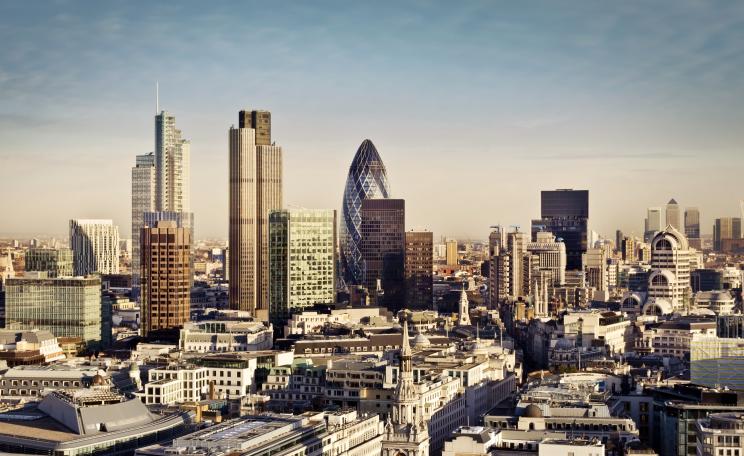Slow fashion focuses on creativity, well-being and collective harmony.
‘Sustainable’, ‘green’, ‘ecofriendly’, ‘made from recycled materials’ are all terms that we have now heard or seen innumerable times when shopping for clothes.
Popular brands which have been exposed for using environmentally-damaging practices suddenly use these terms to describe their clothes and the problems regarding the environment seem to disappear. We’re back to business as usual, giving into our consumerism urges that we have been so conditioned to follow.
Slow fashion (that has now become a movement itself) aims to remind people where garments come from, acknowledging the interconnectedness that people have with the natural world and promoting a more mindful way of living.
Transparent
But in order to understand why slow fashion is increasingly gaining recognition, understanding the fashion supply chain and where the problems lie is fundamental.
The fashion industry is a major contributor to global pollution, with textile consumption ranking fourth with having the highest impacts on climate after food, housing and transportation, and the demand in fashion is only continuing to rise.
However, there is now growing awareness and appreciation for the slow fashion movement as the effects of fast fashion can no longer be ignored.
The supply chain in the fashion industry refers to the whole process which includes designing, creating and selling garments. This includes the network of businesses that collaborate during the process.
Supply chains which have the most success in terms of efficiency have effective communication and are more transparent in elements such as their practices, origin of materials, environmental impact, worker conditions and fair trade.
Spin
Unfortunately this is often not the case with many clothing brands, with companies themselves being unable to comprehend their true environmental and social impacts, due to opaque supply chains that span across the world, too far for brands too see what goes on.
The production chain begins with the acquisition and extraction of raw materials, this includes materials such as linen or cotton but even elements such as hardware and dyes.
Textiles include natural or synthetic materials, natural ones coming from animals or plants and synthetic ones being man-made.
Once the materials are acquired, they go through the process of either being printed or dyed. These two initial processes - extraction and dyeing/ printing - have the potential, if not monitored appropriately, to have significant environmental impacts.
This includes using huge amounts of water and chemicals, using significant amounts of energy to spin the materials into fibre, using pesticides, and leaking harmful dyes into water ways where both people and the surrounding environment are affected.
Damage
This is an issue that extends to forests too. To maintain a certain level of production, agricultural cultivations have had to expand enormously, taking up huge portions of natural land and resources, and often replacing forests with monocultures (cultivations of a singular type of crop) that are detrimental for wildlife by depleting soil nutrients, developing soil-borne diseases and reducing the variety of plants and animals in an area.
Slow fashion focuses on creativity, well-being and collective harmony.
Amy Miles, content manager for Good on You, a leading source for ratings of fashion brands, said: “It’s not immediately obvious how fashion impacts our forests but many of the raw materials we rely on in fashion come from plants or their pulps, meaning that fashion and forests are intrinsically linked.’’
The chain then moves on to the planning of production and design which considers cost-effectiveness, inventory levels, availability of materials and quality of goods. In pursuit of reducing costs and maintaining high levels of productivity, manufacturers frequently opt for cheaper materials.
For instance, synthetic fibre, commonly used in production, release microplastics that are unable to decompose, if not after hundreds of years, when left in landfills. Such decisions underscore the urgent requirement for more sustainable alternatives to mitigate the long-term ecological damage.
Pressure
The raw materials are then turned into completed products in the assembly and manufacturing phase of the supply chain. It is often the overproduction during manufacturingthat causes serious environmental challenges.
Discarded textiles and garments which are not sold or used are thrown into landfills or incinerated which not only contributes to the release of greenhouse gases but also results in significant waste production.
In the fast fashion business model, used by most companies today, clothing is not made with sustainability in mind.
Instead novelty and speed are prioritised with an approach driven by a desire to maximise profits quickly by promoting fast paced changing trends and endorsing the premature disposal of garments.
These practices create enormous waste, with 85 per cent of textiles ending up in dumps every year according to The United Nations Economic Commission for Europe (UNECE) as well as putting extreme pressure on workers.
Finishing
The next step is the distribution of garments to stores, customers or wholesalers. They are packaged and shipped to be sent to their destination either by air, water or land.
Packaging alone accounts, according to UNECE, for 40 per cent of plastic waste. Moreover, one of these products consumes roughly 64 percent of the world’s oil, necessary for fuelling trucks, planes and boats.
Products are then stored in warehouses, the best strategies to deliver garments efficiently and cost-effectively are developed and planned, and finally clothes are sold in stores with customer service and delivery being the final step of the fashion supply chain.
Clothes that are not bought end up (in the best of circumstances) in textile recycling facilities or charities, but more often than not, end up in landfills where they will either end up incinerated or simply left to decompose.
In both cases harmful chemicals are released into the air and dyes leached into soil and waterways.
Impact
As the injurious effects of the fast fashion industry become increasingly evident, the slow fashion movement is gaining recognition as a necessary counterbalance.
Slow fashion emphasizes, unlike the intensive production used by fast fashion, ethical and sustainable practices including sourcing of eco-friendly materials and fair treatment of workers, providing a more holistic approach to the discourse regarding environmental sustainability.
Transparency in supply chains is essential to allow this movement to continue growing, allowing customers to make more informed choices about what they buy.
Every step of the chain being visible, understandable and accountable means trust and integrity are promoted in the industry.
Quality over quantity is encouraged, inspiring consumers to invest in valuable pieces that will last longer and have a much-reduced waste and environmental impact.
Slow
The slow fashion movement presents a viable path towards a more sustainable future in a world where climate change and depletion of natural resources continue to pose significant threats.
We as consumers, and manufacturers, are challenged to rethink our relationship with clothing, acknowledging the connection with people and the environment.
Stella Hertantyo, a sustainable fashion writer and co-creator of Conscious Fashion Collective, said: ‘‘[Slow fashion] involves a shift in perception from the consumer identity imposed by society, and instead focuses on creativity, well-being and collective harmony.
"In contrast, fast fashion isolates people, obscures the truth behind practices, and prioritises profit over everything else.’’
Striving for change by promoting more mindful consumption, responsible production and transparency in supply chains is what will entail a healthier fashion system, preserving nature and the planet.
This Author
Sofia Giaconi has recently graduated from the University of Bristol with an MSci in science communication for a better planet and is working towards a career in sustainability with a focus in fashion.




